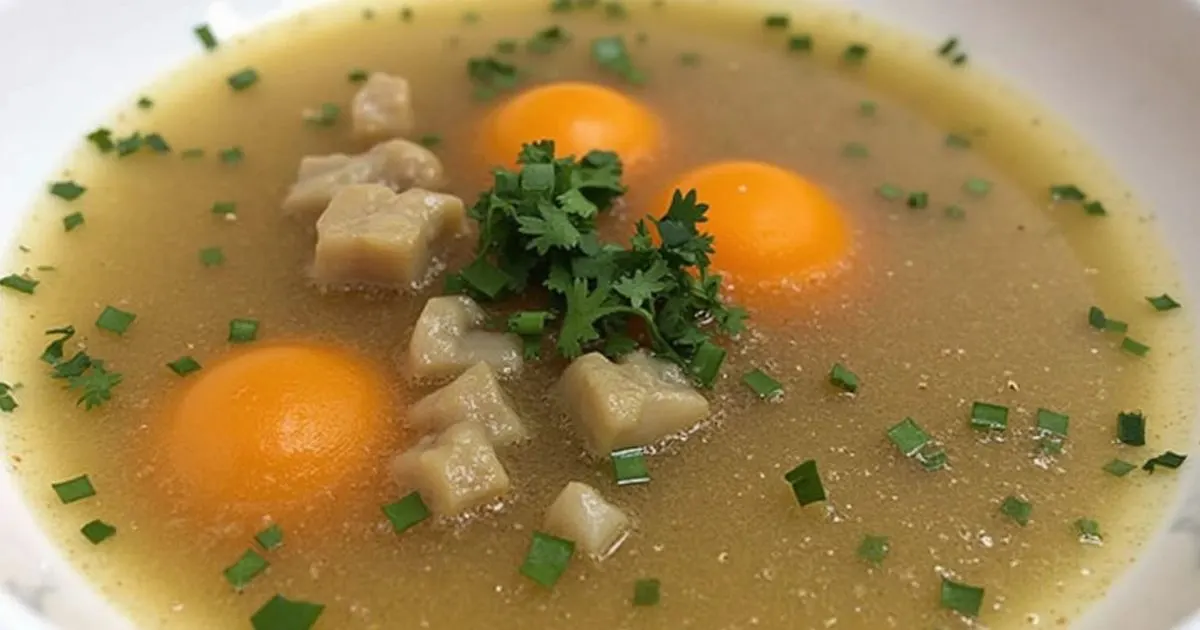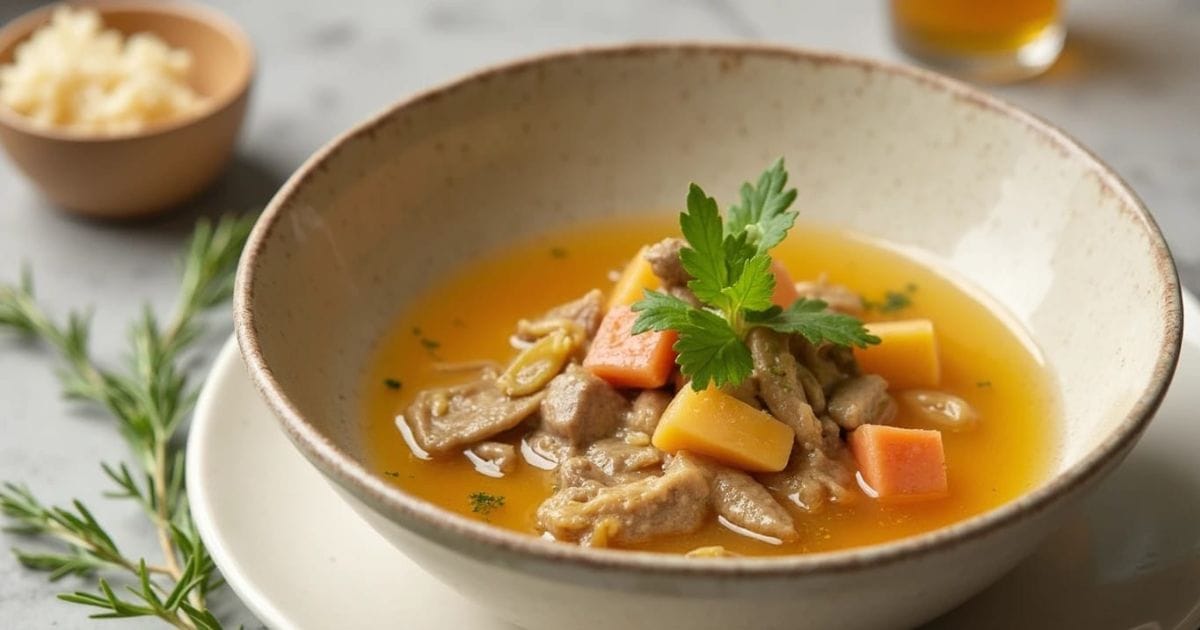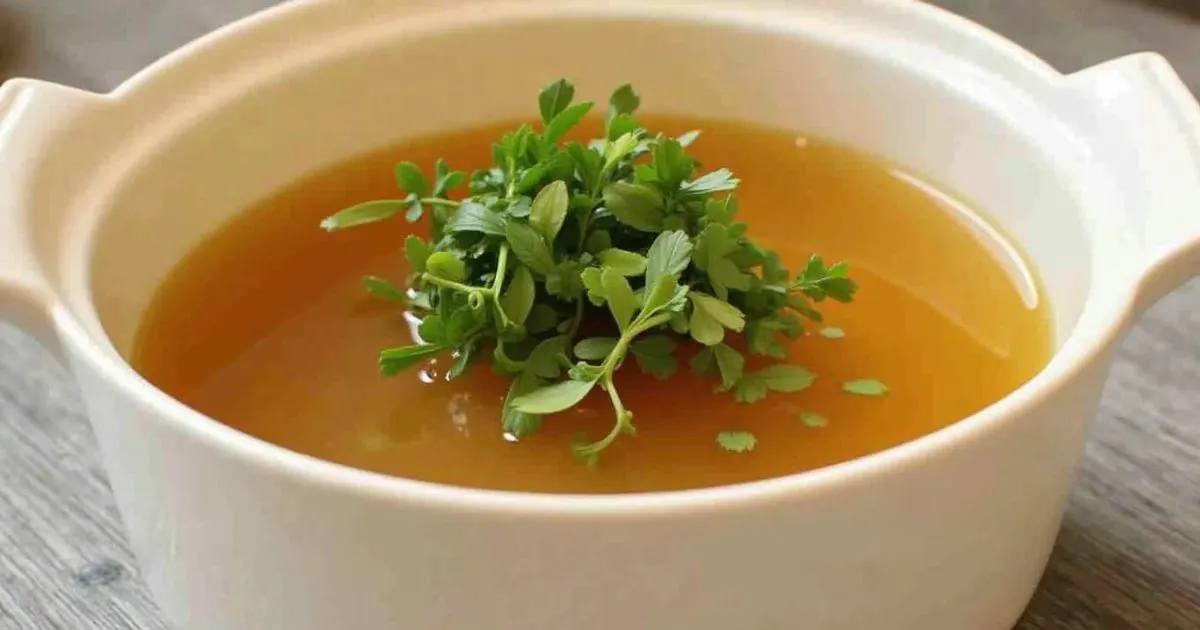If you’ve ever felt the warmth of a rich, homemade broth simmering on your stovetop, you already know that there’s something special about bone broth. It’s a comforting, nourishing liquid that’s not just for soups it’s a kitchen staple, packed with essential nutrients and powerful health benefits. If you’re looking to boost your immune system, heal your gut, or simply enjoy a warm, satisfying drink, then beef bone broth is your perfect solution.
Whether you’re new to the world of bone broths or a seasoned pro, the process of making a hearty beef bone broth from scratch is simple, incredibly rewarding, and packed with nutrients your body will thank you for. By the end of this guide, you’ll know everything there is to know about beef bone broth from selecting the right bones, to cooking techniques, and how to incorporate it into your daily meals.
Table of Contents
What Exactly is Beef Bone Broth and Why It’s Worth Making Yourself

Understanding Beef Bone Broth
Beef bone broth is a rich, nutritious liquid made by simmering beef bones (often with meat still attached) along with vegetables, herbs, and seasonings over a long period of time. Beef bone broth stands apart from regular beef stock, which mainly uses meat and bones. It’s slowly simmered for 12-24 hours to extract collagen, gelatin, and minerals from the bones. the bones to leach into the liquid. This process makes the broth incredibly rich in nutrients that can benefit your joints, skin, digestion, and overall health.
Key Benefits of Beef Bone Broth
You may be wondering why people are so passionate about beef bone broth, and for good reason. Here are some of the top benefits:
- Rich in Collagen and Gelatin: Collagen is a vital protein that supports the elasticity of your skin, hair, and nails, and also helps strengthen your joints. When boiled, the collagen in beef bones turns into gelatin, which is known for improving gut health and digestive function.
- Improved Digestion: Gelatin helps seal and heal the gut lining, making bone broth an excellent choice for those with digestive issues like leaky gut syndrome or food sensitivities.
- Boosts Immunity: The amino acids, vitamins, and minerals in bone broth help to boost your immune system, supporting your body’s natural defense mechanisms.
- Nutrient-Dense: Beef bone broth contains an array of vital minerals including calcium, magnesium, phosphorus, and potassium, which are essential for overall health.
Ingredients for a Perfect Beef Bone Broth Recipe

The beauty of beef bone broth is in its simplicity. All you need are a few quality ingredients, and with patience, you’ll have a rich, flavorful broth to enjoy for weeks. Below is a table that outlines the essential ingredients needed to make the perfect beef bone broth.
| Ingredient | Quantity | Notes |
|---|---|---|
| Beef Bones (with marrow) | 2-3 pounds | Marrow bones, oxtail, or knuckle bones yield the richest flavor. |
| Water | 12 cups (or enough to cover the bones) | Filtered water is best for a clean taste. |
| Apple Cider Vinegar | 2 tablespoons | Helps extract the minerals from the bones. |
| Vegetables (onion, carrots, celery) | 1 medium onion, 2 carrots, 2 celery stalks | Adds flavor and nutrition. |
| Garlic | 4 cloves, smashed | Adds an extra boost of flavor. |
| Herbs (bay leaves, thyme, parsley) | 1-2 bay leaves, a few sprigs of thyme, parsley | Optional, but they provide aromatic depth. |
| Salt & Pepper | To taste | Enhances the flavor of the broth. |
Choosing the Right Beef Bones
When selecting bones for your broth, the type of bones you use makes all the difference in the flavor and richness of your broth. Look for bones that have a combination of meat, marrow, and connective tissue. Here are some of the best choices:
- Knuckle Bones: These are packed with collagen and connective tissue, making them ideal for a rich and gelatinous broth.
- Oxtail: This cut is full of marrow and connective tissue, giving the broth a deep, savory flavor.
- Marrow Bones: These are full of fatty marrow, which enriches the broth with a silky texture and adds extra nutrients.
- Beef Neck Bones: This cut provides a good balance of meat, bone, and marrow, perfect for a flavorful broth.
A Complete Guide to Making Beef Bone Broth from Scratch
Now that you’ve gathered all the necessary ingredients, it’s time to start cooking your beef bone broth. Don’t worry if it seems like a long process—slow and steady wins the race, and the result will be well worth it.
Step 1: Prepare the Bones
Roasting the bones is the key to unlocking a deep, rich flavor. Here’s how you can do it:
- Preheat your oven to 400°F (200°C).
- Spread the beef bones out in a single layer on a roasting pan.. You can use marrow bones, knuckles, oxtail, or a combination of these.
- Roast the bones for 30-45 minutes, or until they turn golden brown. This caramelization adds depth and complexity to the flavor of your broth.
Step 2: Set Up the Broth
Once the bones are roasted, it’s time to start simmering your broth:
- Carefully place the bones into a roomy stockpot or slow cooker. If you’re using a slow cooker, set it to the low setting.
- Add the water to cover the bones. You want enough water so that the bones are submerged, but not so much that the broth becomes too diluted.
- Add the apple cider vinegar. This will help to extract the minerals and collagen from the bones.
Step 3: Simmer Slowly
Now comes the long, slow simmering process:
- Bring the broth to a boil over medium-high heat. Once boiling, reduce the heat to a low simmer.
- Let it cook for 12-24 hours. This slow simmering process is crucial for extracting all the nutrients and flavors from the bones.
- Skim the foam that rises to the surface in the first hour. This will help create a cleaner, clearer broth.
Step 4: Add Vegetables and Herbs
After a few hours of simmering, it’s time to add the vegetables and herbs to give your broth extra flavor:
- Add the onion, carrots, and celery (or any other vegetables you like).
- Add fresh herbs like bay leaves, thyme, and parsley. These will give the broth a fragrant, savory flavor.
Step 5: Strain and Store the Broth
Once your broth has simmered and is bursting with flavor, it’s time to strain and store it:
- Strain the broth through a fine-mesh sieve to remove the bones, vegetables, and herbs.
- Allow it to cool to room temperature, then transfer it to airtight containers for storage.
- Refrigerate for up to a week or freeze for longer storage. When chilled, your broth will become jelly-like due to the gelatin content. Just reheat it on the stove when ready to use.
How to Use Beef Bone Broth in Your Meals
Beef bone broth is incredibly versatile, so you can incorporate it into many meals. Here are some great ways to use it:
- As a Base for Soups and Stews: Bone broth is an ideal base for hearty soups like French onion soup, beef stew, or vegetable soup. It adds a rich, savory flavor that makes the dish more filling and satisfying.
- In Sauces and Gravies: Add beef bone broth to sauces and gravies to enhance their richness and flavor. It’s a great way to thicken sauces while adding nutrients.
- Drink it Straight: For a simple, nourishing drink, heat up a cup of beef bone broth and enjoy it as a warm, comforting beverage. It’s particularly good for soothing your stomach or warming you up on a cold day.
- In Cooking Grains: Use beef bone broth as the liquid for cooking rice, quinoa, or other grains. This adds a rich depth of flavor to otherwise plain dishes.
How Long Does Beef Bone Broth Last?
You can store beef bone broth in the fridge for up to a week. For longer storage, freeze it in portions that are easy to defrost and reheat. Bone broth can be stored in the freezer for 3-4 months without losing its flavor or nutrients.
Tips for Enhancing the Flavor of Your Beef Bone Broth
While the basic recipe is already packed with flavor, here are a few tips to elevate your broth even further:
- Use different types of bones: Mixing marrow bones with knuckle bones or oxtail gives your broth a more complex and balanced flavor.
- Roast the bones thoroughly: The longer you roast the bones, the deeper the flavor will be. Don’t skip this step!
- Use fresh herbs: Fresh herbs like thyme, rosemary, and bay leaves can really brighten up the broth and add a lovely aromatic touch.
- Add a splash of soy sauce or fish sauce: These umami-packed ingredients can add depth and complexity to your broth.
Conclusion
Making beef bone broth is not only an enriching culinary experience but also a nourishing one for your body. Whether you’re looking to heal your gut, support your joints, or simply enjoy a deliciously rich and comforting beverage, beef bone broth ticks all the boxes. It’s incredibly versatile, nutrient-dense, and easy to make with just a few ingredients and some time on your hands.
Now that you know how to make the perfect beef bone broth, it’s time to get in the kitchen and start simmering. Your body (and your taste buds) will definitely appreciate it!
Frequently Asked Questions
Which bones are best for making beef bone broth? The best bones for beef bone broth are marrow bones, oxtail, knuckle bones, and beef neck bones. These cuts are rich in collagen, marrow, and connective tissue, which make the broth flavorful and nutritious.
How long should I cook beef bone broth?
For the best flavor and nutrients, beef bone broth should simmer for at least 12 hours and up to 24 hours. The longer you cook it, the richer and more gelatinous the broth will be.
Can I make bone broth in a slow cooker?
Yes, using a slow cooker is an excellent way to make beef bone broth. Simply add the roasted bones, water, vinegar, and vegetables to your slow cooker and set it to low heat for 12-24 hours.
Is beef bone broth good for gut health?
Yes, beef bone broth is rich in gelatin, which helps to seal and heal the gut lining, making it a great choice for improving digestion and gut health.
Can I drink bone broth every day?
Absolutely! Drinking bone broth daily can provide numerous health benefits, including better skin, stronger joints, and improved digestion.
How do I store beef bone broth?
You can store beef bone broth in the fridge for up to a week or freeze it for longer storage. Freeze it in portions for easy reheating.

